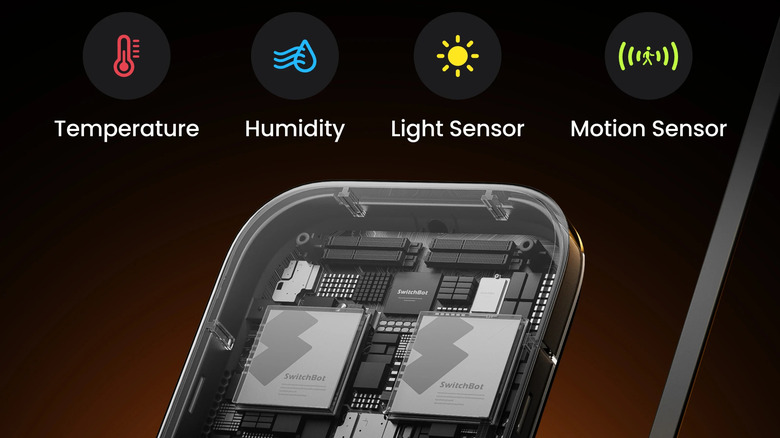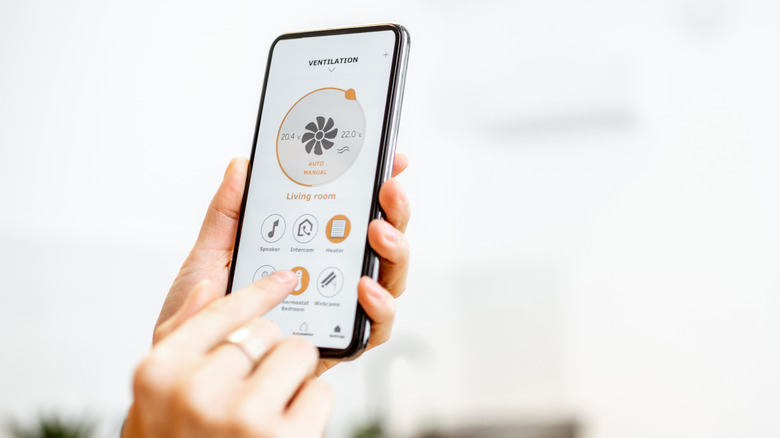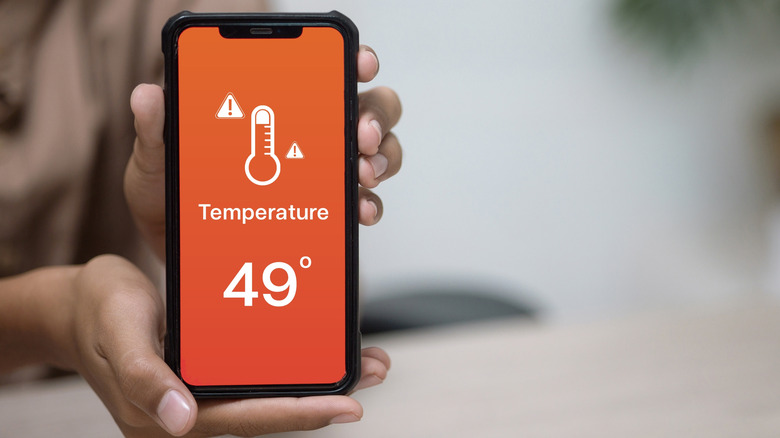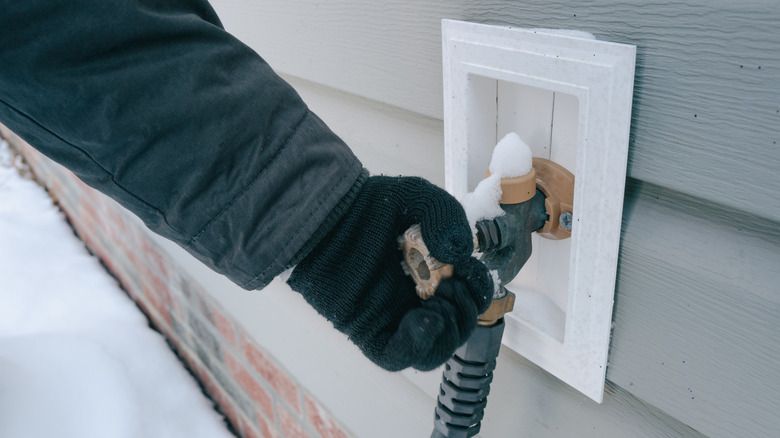5 Handy Ways To Use Temperature Sensors In Your Home
We may receive a commission on purchases made from links.
Though the meaning of smart home varies depending on who you ask, with so many useful smart sensors for your home, if your home isn't smart, you're missing out. Smart tech can do so much, and the implementation of temperature sensors might not be the first innovation you think of with a smart home system. Yet, there are many reasons to consider using temperature sensors in your home.
From smart gadgets that work with Alexa to sensors that work across a variety of platforms and voice assistants, there's truly something for everyone and every need. Whether you're just starting out with smart devices or are specifically looking for ways to climate-control your house, temperature sensors are a uniquely useful addition to a smart home. You can set and forget them, with alerts and automations that keep things running efficiently, whether you're home to monitor everything or need to do so remotely.
Open or close window coverings
Have you ever considered just how much the outdoor temperature impacts the indoor temperature? If you've sat in front of a window as the sun angles directly in, you know exactly why auto-blinds or curtains are a necessity. Using the increasing temperature as an indicator to close the curtains or blinds is one smart use of smart tech.
Temperature-based curtain action might be one of the weirdest yet genius ways to use temperature sensors in your home. When the sun is beating down and temperatures are going up, a temperature sensor connected to automatic blinds can help cool your home without the use of AC, possibly saving you money on energy while making you more comfortable.
SwitchBot curtains are a handy smart bedroom upgrade, but you can use them in any room to automatically adjust your curtains depending on the ambient temperature, or simply on a timed schedule. Using a SwitchBot hub, you can create an automation based on temperature. Smart blinds may be a more involved upgrade — Aprilsmart blinds are about $100 per window on Amazon — but could save some cash in the long run.
Turn on fans
If your home is already smart device-equipped, you may have set up some NFC automations to do things like adjust the thermostat when you arrive home or shut the lights off when you leave a room. Another way to save energy is to use temperature sensors to turn on fans or AC units in specific rooms, rather than turning on the household HVAC system. If you don't have an HVAC unit, temperature-based automations can make the most of the heating and cooling equipment you do have.
Making fans or window AC units turn on automatically based on temperature will take some tinkering. First, you'll need a set of temperature sensors, one for each area that you want to climate control. I've had a Govee hygrometer thermometer that's run for years with no problems. Most Govee devices can be used as triggers to turn on, for example, a smart outlet — where you can plug in a fan or other device. However, many other types of smart devices can perform the same functions, so choose what fits your hub or existing smart home devices.
Get alerts on your device
If stringing together devices and commands sounds a bit intimidating, temperature sensors can also be used in a super simple way right on your device. My favorite smart home addition has been a Govee temperature sensor that alerts me when my living room temperature goes above or below the parameters I've set. It's a simple app notification on my smartphone, but with those alerts, I'm able to remotely turn on our mini split or switch on a fan, whether I'm in the other room or hours away.
While other helpful reminder gadgets can round out your smart home, temperature sensors are great for alerting you to potentially unsafe conditions for your pets, plants, or family members. You can also begin to track patterns that could help you reduce energy usage. For example, I often compare the outdoor temperatures to indoor ones, and looking at the history helps me predict whether it will get cold enough in my house to warrant turning on a heater or starting a fire in our woodstove (the latter being hard to stop once it starts).
Receive notifications to open (or close) windows
One of the major benefits of smart home automation is being able to customize your home to fit your comfort level. It doesn't take a long string of actions to accomplish the right ambient temperature, though. Detecting the interior temperature is arguably one of the best uses of temperature sensors in your home. However, using temperature sensors outdoors can tell you a lot about your home's efficiency and help you make smarter heating and cooling decisions.
For example, if it's cooler outside than inside on a warm day, your temperature sensors can alert you to that fact. Then, you'll know exactly when to open the windows to cool things down. The opposite is also true; When it's warmer outside than inside, opening a window might warm things up more efficiently than turning on a heater. If you really want to get fancy, you can set up automations to actually open the windows mechanically, but that will require more equipment and, thus, set up time.
Avoid frozen pipes
If you live in a colder climate, or just somewhere with harsh winters, you're probably familiar with all the strategies to avoid frozen pipes. Even if the pipes are insulated, though, there might be times when it's just not enough. To help avoid frozen and, later, burst pipes, consider using a temperature sensor.
Temperature sensors in basements or crawl spaces could alert you to dangerously low temperatures. Then, you can take action, whether that's turning on the HVAC system, running a bit of water to keep the pipes defrosted, or applying more weatherproofing.
Temperature sensors in those lesser-visited areas can also reveal patterns throughout the seasons, allowing you to plan for maintenance and repairs. Plus, if you choose a temperature sensor that also has a hygrometer, it could alert you to excessive moisture, which could indicate a leak. Early notifications of temperature and moisture related issues could save you money in the long run, but also provide peace of mind.





